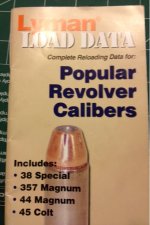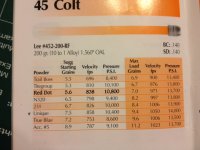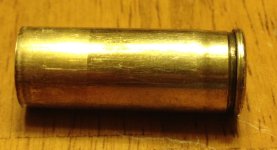I am working up loads for 45 colt. I had a case swell at its base slightly upon firing. It was the second round I fired out of 5 with this particular load. Numbers 1 and 3-5 were normal and felt normal going off. I was using a Uberti Colt clone. The ammo components were as follows: Winchester cases (2nd firing on these), Remington large pistol primers (not magnums), and 200 gn RNFP bullets on top of 5.3 gns of titegroup. It was my starting load and I increased it from there a tenth gn at a time up to middle of load range where I stopped (maybe 5.9 or 6.0 gns). Since it was 1 round out of 5, I can think of 2 possibilities: 1) an over-charge or, 2) too tight of a crimp.
I would have thought a double charge would have destroyed the gun. I could see no damage on the cylinder and the case did not split. I did have some issues seating/crimping the bullet and might have seated it or crimped it too tight (is that possible?). I'm asking for any ideas on what might have happened. I'm fairly new to reloading and want to do things correctly and safely. I have done some smokeless and BP reloading in 38 special and this has not happened to me through testing loads and loading/shooting over 150 of those rounds.
Can any of you experienced reloaders out there give me an idea what might have happened?
Next time I'm weighing charges after adding powder but before seating the bullet.
I would have thought a double charge would have destroyed the gun. I could see no damage on the cylinder and the case did not split. I did have some issues seating/crimping the bullet and might have seated it or crimped it too tight (is that possible?). I'm asking for any ideas on what might have happened. I'm fairly new to reloading and want to do things correctly and safely. I have done some smokeless and BP reloading in 38 special and this has not happened to me through testing loads and loading/shooting over 150 of those rounds.
Can any of you experienced reloaders out there give me an idea what might have happened?
Next time I'm weighing charges after adding powder but before seating the bullet.



